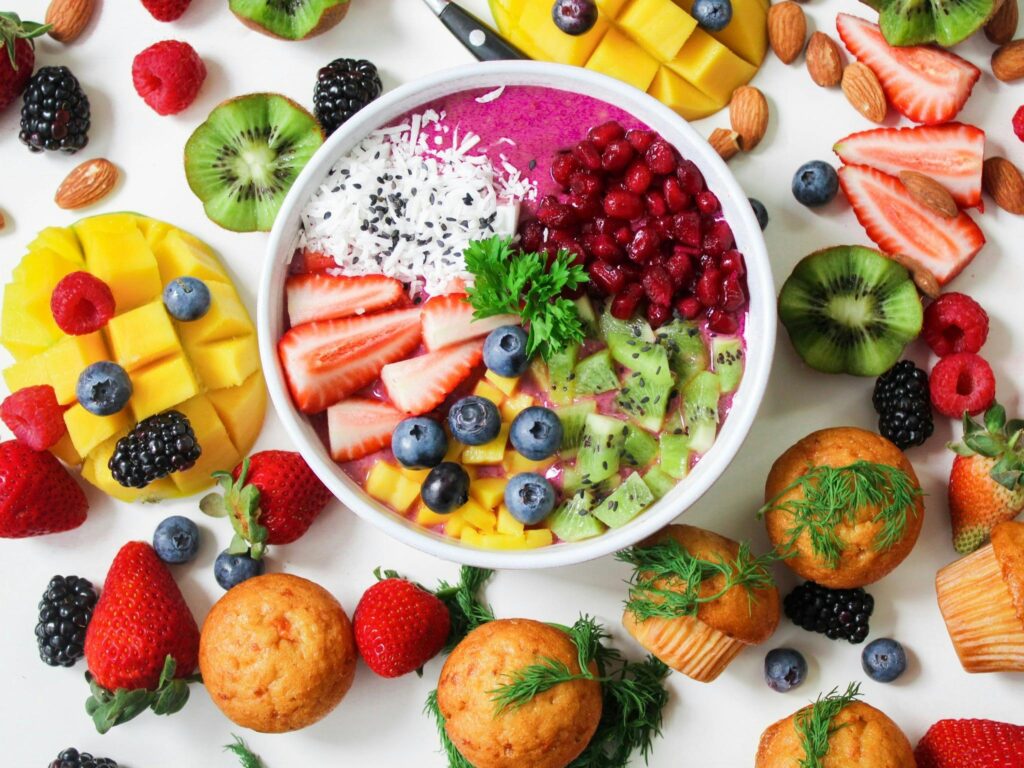For people with diabetes, managing blood sugar levels is a top priority, and diet plays a crucial role in this. While fruits are packed with essential vitamins, minerals, and fiber, some contain higher amounts of natural sugars, which can cause blood sugar spikes. However, there are many low-sugar fruits for diabetics that can be safely enjoyed without affecting glucose levels dramatically. This article explores the best options and how to incorporate them into your diet to maintain stable blood sugar levels.
Understanding the Role of Fruit in a Diabetic Diet
Fruits are nature’s sweet treats, but they contain natural sugars such as fructose, which can elevate blood sugar levels. However, many fruits are also high in fiber, water, and essential nutrients that help manage diabetes. The glycemic index (GI) of fruits can be a useful measure to determine how quickly they raise blood sugar. The lower the GI, the better it is for diabetics.
Fruits that are rich in fiber and low in sugar have a more favorable effect on blood glucose levels. These low-sugar fruits for diabetics can provide health benefits while preventing sudden spikes in blood sugar.
Best Low-Sugar Fruits for Diabetics
Let’s explore the top low-sugar fruits for diabetics and why they should be included in a diabetic-friendly diet.
1. Berries (Strawberries, Blueberries, Raspberries)
- Why They’re Great: Berries are nutrient powerhouses. They are low in sugar but packed with antioxidants, vitamins, and fiber. For example, strawberries contain just 8 grams of sugar per cup, and their high fiber content helps slow sugar absorption into the bloodstream.
- How to Use Them: Add berries to smoothies, salads, or enjoy them as a fresh snack. You can also sprinkle them over yogurt or oatmeal for a healthy breakfast.
Fun Fact: Berries have one of the lowest glycemic index scores of all fruits, making them a perfect choice for blood sugar control.
2. Avocados
- Why They’re Great: While often considered a vegetable, avocados are technically a fruit. They are unique in that they contain almost no sugar and are packed with healthy monounsaturated fats. These fats help regulate blood sugar by improving insulin sensitivity.
- How to Use Them: Mash avocado on whole-grain toast, add it to salads, or blend it into smoothies for a creamy, blood sugar-friendly meal.
Fun Fact: Avocados have less than 1 gram of sugar per serving and a glycemic index of nearly zero.
3. Cherries
- Why They’re Great: Tart cherries, in particular, have a lower sugar content compared to other types of cherries. With about 13 grams of sugar per cup, they provide a delicious balance between sweetness and nutritional benefits.
- How to Use Them: Enjoy cherries as a snack or add them to salads, smoothies, or baked dishes for a burst of flavor.
Fun Fact: Tart cherries have been shown to have anti-inflammatory properties, which can benefit people with diabetes.
4. Kiwi
- Why They’re Great: Kiwis are small but mighty when it comes to nutrient density. They are relatively low in sugar, with about 6 grams of sugar per fruit. Additionally, kiwis are high in fiber and vitamin C, which help regulate blood sugar levels.
- How to Use Them: Slice kiwi into your salads, or blend them into a refreshing smoothie.
Fun Fact: The fiber in kiwis slows the absorption of sugar into the bloodstream, helping prevent glucose spikes.
5. Peaches
- Why They’re Great: Peaches may taste sweet, but they are low in sugar and have a low glycemic index. One medium peach contains about 13 grams of sugar. They are also rich in vitamins A and C, which promote overall health.
- How to Use Them: Eat peaches fresh, add them to yogurt or cottage cheese, or grill them for a warm, diabetic-friendly dessert.
Fun Fact: Fresh peaches are much lower in sugar than canned peaches, which are often packed in sugary syrup.
6. Apples
- Why They’re Great: Apples are a staple fruit in many households, and fortunately, they are a good choice for diabetics. With about 19 grams of sugar per medium apple, they are on the higher side of the low-sugar fruits, but their high fiber content (especially in the skin) helps regulate blood sugar.
- How to Use Them: Slice apples and spread with almond butter for a nutrient-dense snack, or chop them into salads for added crunch.
Fun Fact: The pectin in apples helps slow the release of sugar into the bloodstream, making it easier for diabetics to manage glucose levels.
7. Grapefruit
- Why They’re Great: Grapefruits are well-known for their ability to aid in weight loss, but they are also a great low-sugar fruit for diabetics. Half a medium grapefruit contains just 9 grams of sugar and a high amount of vitamin C.
- How to Use Them: Enjoy grapefruit halves as a snack, or squeeze the juice over salads and seafood for a zesty flavor boost.
Fun Fact: Grapefruit has a glycemic index of just 25, making it one of the best fruits for blood sugar management.
8. Oranges
- Why They’re Great: Oranges, like grapefruits, are citrus fruits that are high in fiber and low in sugar. A medium-sized orange contains about 12 grams of sugar and a healthy dose of vitamin C, which supports immune function.
- How to Use Them: Enjoy an orange as a snack, or add the segments to salads and smoothies for an extra burst of flavor.
Fun Fact: Whole oranges are much better for diabetics than orange juice, which can cause rapid blood sugar spikes.
9. Pears
- Why They’re Great: Pears are another great fruit for diabetics, as they are high in fiber and low in sugar. A medium pear contains about 17 grams of sugar but offers a large dose of dietary fiber, which helps balance blood sugar levels.
- How to Use Them: Slice pears into salads, roast them for a dessert, or eat them raw for a refreshing snack.
Fun Fact: The fiber in pears helps slow the release of sugar into the bloodstream, making them a great snack for diabetics.
10. Plums
- Why They’re Great: Plums are a low-sugar fruit, with one medium plum containing just 7 grams of sugar. They are also rich in antioxidants, which help combat inflammation and oxidative stress, common issues for diabetics.
- How to Use Them: Eat plums as a snack, or slice them into yogurt or oatmeal.
Fun Fact: Dried plums (prunes) have a much higher sugar content, so it’s best to enjoy fresh plums for better blood sugar control.
How to Include Low-Sugar Fruits for Diabetics in Your Diet
Incorporating low-sugar fruits for diabetics into your daily diet is easy and delicious. Here are a few tips to help you get started:
- Pair Fruits with Protein or Healthy Fats: To prevent blood sugar spikes, pair fruits with protein or healthy fats. For example, eat berries with Greek yogurt or pair apple slices with peanut butter.
- Eat Fruits with the Skin On: The skin of many fruits, like apples and pears, contains fiber that slows the absorption of sugar into the bloodstream.
- Control Portion Sizes: Although these fruits are low in sugar, portion control is still key. Stick to recommended serving sizes to avoid consuming too much sugar in one sitting.
- Choose Fresh or Frozen Over Canned: Canned fruits are often packed in syrup, which adds unnecessary sugar. Choose fresh or frozen fruits for the best results.

